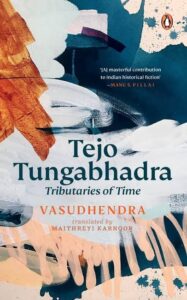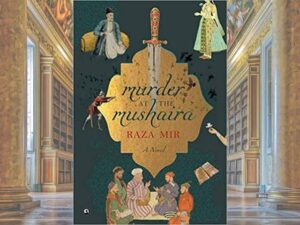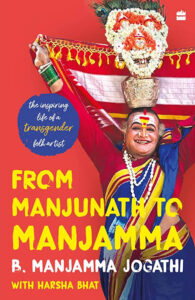” Reading is to the mind what exercise is to the body”
-Joseph Addison, English poet and playwright.
In the true spirit of this statement, this month, I have exercised my brain consistently enough and duly ignored the body 🙂 But it was such a worthwhile exercise that the extra pounds have been duly forgiven, if not forgotten.
I got my hands on a set of books which immersed me in history, mythology, philosophy and life itself. I’m still floating in the happiness of it all.
Hence sharing with all of you the reviews of my September reads with the hope that you may find them interesting enough to pick up.
1. Tejo Tungabhadra by Vasudhendra.

In 2017, the Karnataka State Psychiatry Conference held in Hospete had invited the author of this book as a guest speaker. He had eloquently spoken about the rise and the fall of the Vijayanagara empire. He described the politics and economics of the time, giving a detailed account of how Indians started to trade with foreigners for Arab stallions which were important to win wars and expand empires! This ultimately lead to the Portugese gaining ground in India and starting to build their empire. Who knew horses were responsible for the downfall of mighty empires and the conquest of the Portugese? History does spring its surprises. Looking back, I feel that it was research for this book that he was quoting. And it is this detailing that makes the book a brilliant read.
The story is set in the late 1400s to the early 1500s, just prior to the Portuguese invasion of Goa. It follows the lives of two couples, one residing in Lisbon (on the banks of river Tejo) and the other in a fictional Tembakapura ( on the banks of River Tungabhadra).
When we travel, it is commonplace to visit the tourist attractions and the hip parts of town and forget about the entrails of the city. Most of our history textbooks talking about the empires of the past do exactly that. They wax eloquent about its glories while giving us only a small glimpse of the life of commoners during the time.
The beauty of this book lies in the immersive experience that the author gives us about the day to day lives of the non royals back then. The belief systems, introduction of printing and the how paper was looked down upon, how printing was embraced by the Christian kings to print the Bible, the life of sailors during the long voyages they had to partake, the sati system and why it was a way of life then, how war was an enterprise and a business opportunity and many more such sensitive issues and experiences have been described in intricate detail and very non judgmentally. As my niece opined, reading the book makes you feel like you are walking the alleyways of Tembakapura or the Harbour of Lisbon and participating in the hustle and bustle of life there.
There is an English translation of the book available too. But reading it in its original kannada version, I felt, added that extra tinge of flavor!
2. Under the Red moon by Harini Nagendra.

Harini Nagendra, is by profession, an ecologist, working in Azim Premji University, Bengaluru and frequently writes columns in Deccan Herald about environment conservation. This is her second outing as a novelist writing the Bangalore Detective Club series. Set in the pre independence era Bengaluru, with a female protagonist Kaveri and her doctor husband Ramu, both the books revolve around how Kaveri solves murders which happen in her neighborhood.
The Bengaluru I saw growing up was a vastly different one from what we are accustomed to now. Wide roads flanked by a canopy of gulmohar trees, rangolis in front of traditional looking homes, the voice of M S Subbalakshmi floating out of windows in the early morning and many many cycles on the roads. A trip to Bangalore meant eating hot idlis, a hike to the hilltop in Lalbagh, a customary trip to Higginbothams and the train ride in Balbhavan! It is this ambience that the novel is set in.
It tells the story of a eighteen year old math loving bride who wins over convention and her mother in law to solve crimes with her extremely supportive spouse (who seems too good to be true) and a police inspector who respects her smarts (again too good to be true). The nostalgia of old Bangalore rather than the actual crime drama made me love this one.
3. Murder at the Mushaira by Raza Mir.

When you really crave something, the universe apparentely conspires to hand it to you. I wondered whether continuing to read historical fiction would make me bored, but this one whet my appetite for more! I bought this book during the lockdown and it stayed in my kindle gathering ‘virtual’ dust when I decided to give it a go. And was mind blown.
The book is set during the last few years of the crumbling Mughal empire and the rising of the sepoy mutiny. It describes the way Delhi aristocracy was trying hard to hold on to their bourgeois lifestyles when the undercurrents of patriotism and the mutiny were on the rise. It is a world of spies, rebels, shayaris, yum food, old fashioned but effective spy networks run by commoners, prostitutes and servants in the backdrop of a burning Delhi in the Holy month of Ramzan. Again a plunge into the annals of history and with a mystery on the side!
4. From Manjunath to Manjamma by Harsha Bhat.

In a sharp detour, I chanced upon the autobiography of Manjamma Jogti, a transgender theater artist, dancer of the Jogti nritya and the first transgender President of the Karnataka Janapada academy. Despite all her achievements, what catapulted her into fame, in my opinion, was the video clip of her warding off the evil eye (dhristi) for our Hon’ble President when she went to receive her Padmashri award!
The book, translated to english by Harsha Bhat, speaks about her transition from Manjunath that she was born as, to Manjamma that she now is. As straight people, we seem to have no idea about the confusion that an individual goes through when he/she discovers that they are not like their peers. The peers in question do not behave very kindly to this confusion either. I have had clients who suffer from gender identity crises crying about the bullying that they faced in school or by their own family. Maybe reading books like this, may make us more aware.
Though it is painful to read about the authors’ gender identity issues, familial pressures to conform, her ostracisation, depression and difficulties, it feels good to know that there is a happy ending, atleast to this story.
There are parts of the book which did not agree with my sensibilities, like the time she helped her brother remarry as his first wife was unable to conceive. When looked at from a socio-cultural point of view, it may have been acceptable in the villages of the yesteryear, but still made me flinch at the unfairness of it.
Reading the book gave me a perspective of how difficult it is for gender fluid individuals to fit in, how confused they are, the pervasive feeling of letting down their family that they live with and the long way that we have to grow as a society to accept them as they are. Makes me want to read more LGBTQ literature.
5. The Alchemist.

Yes, it is famous and yes, I have read it before – and happened to reread it this month. The first time I read the book was in the first year of my medical school. All of eighteen, my understanding of philosophy and spirituality was extremely rudimentary and hence the book felt like some over hyped obscure piece of writing. I had no idea that there was a genre of books called “allegorical fiction” ( we lived in a time when google reads was non-existent– and that now makes me feel about as ancient as the book itself:))
But this time round, I felt as though each sentence was speaking to me and guiding me. The book tells the story of a shepherd from Santiago who yearns to travel the world in search of treasure. His is a journey that in turn teaches us about self belief, learning to trust our instincts, taking leaps of faith and believing in a Universal power which is always guiding and helping us. Moral of the story- when stuck in life, open this book. At only 88 pages, it feels like free psychotherapy!
Hope you find this pile interesting. Kindly do recommend books which you feel are interesting and worth a read!





Lovely. As usual I enjoyed reading your blog
It makes me feel so happy reading your opinions. Four books I have and two have read. Should read the remaining Even I happened to pick up Manjunath to Manjamma. I have to read Murder on the mushaira. It’s lying there. And the other one u sent me. Alchemist have read and now after reading your blog feel like rereading it. Wish more time was there in a day. Let’s go on a reading break. We shall take off and just read and exchange books
I would love to…wish there was a job which paid us to read! would’nt it be the best!!